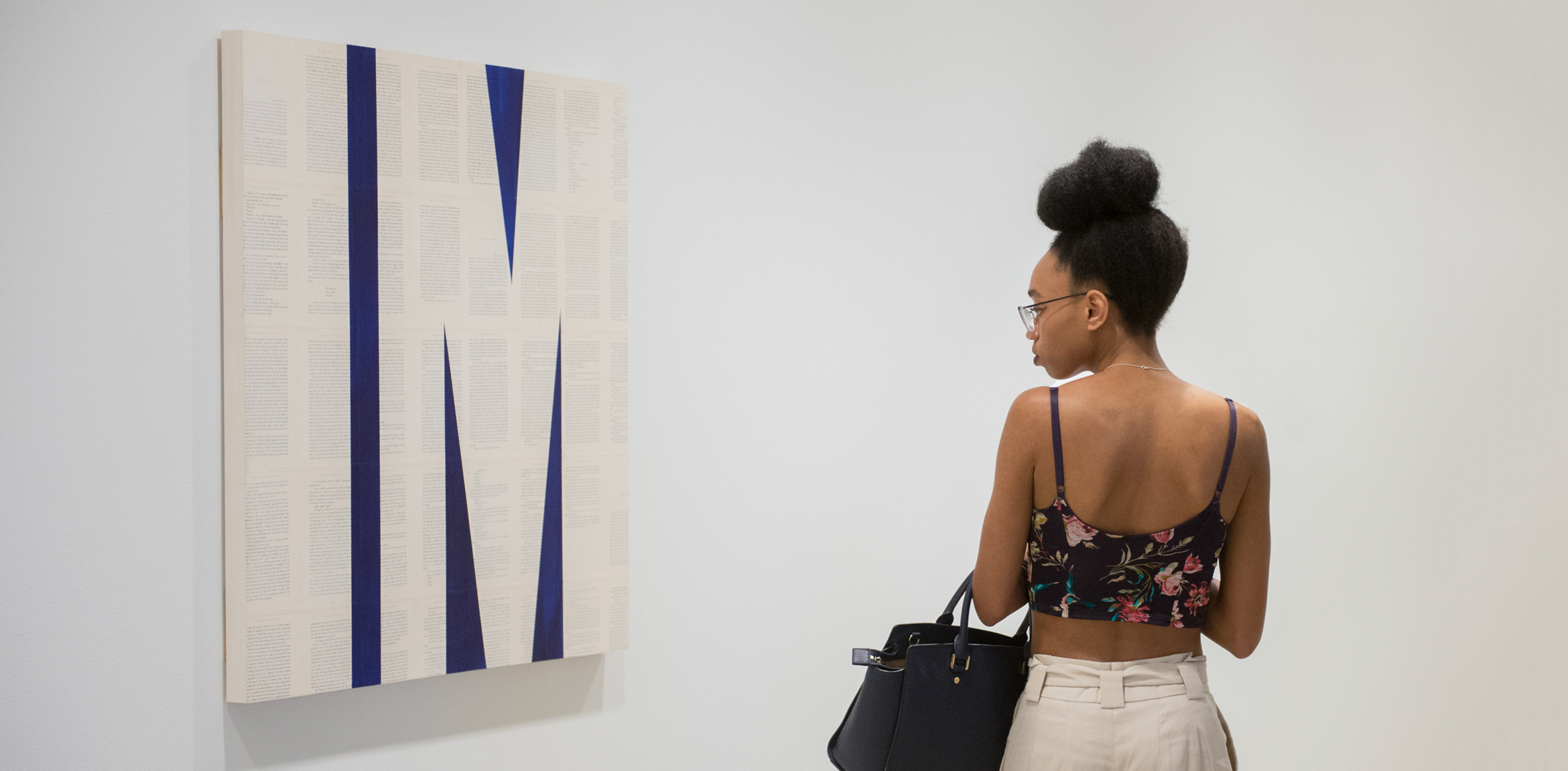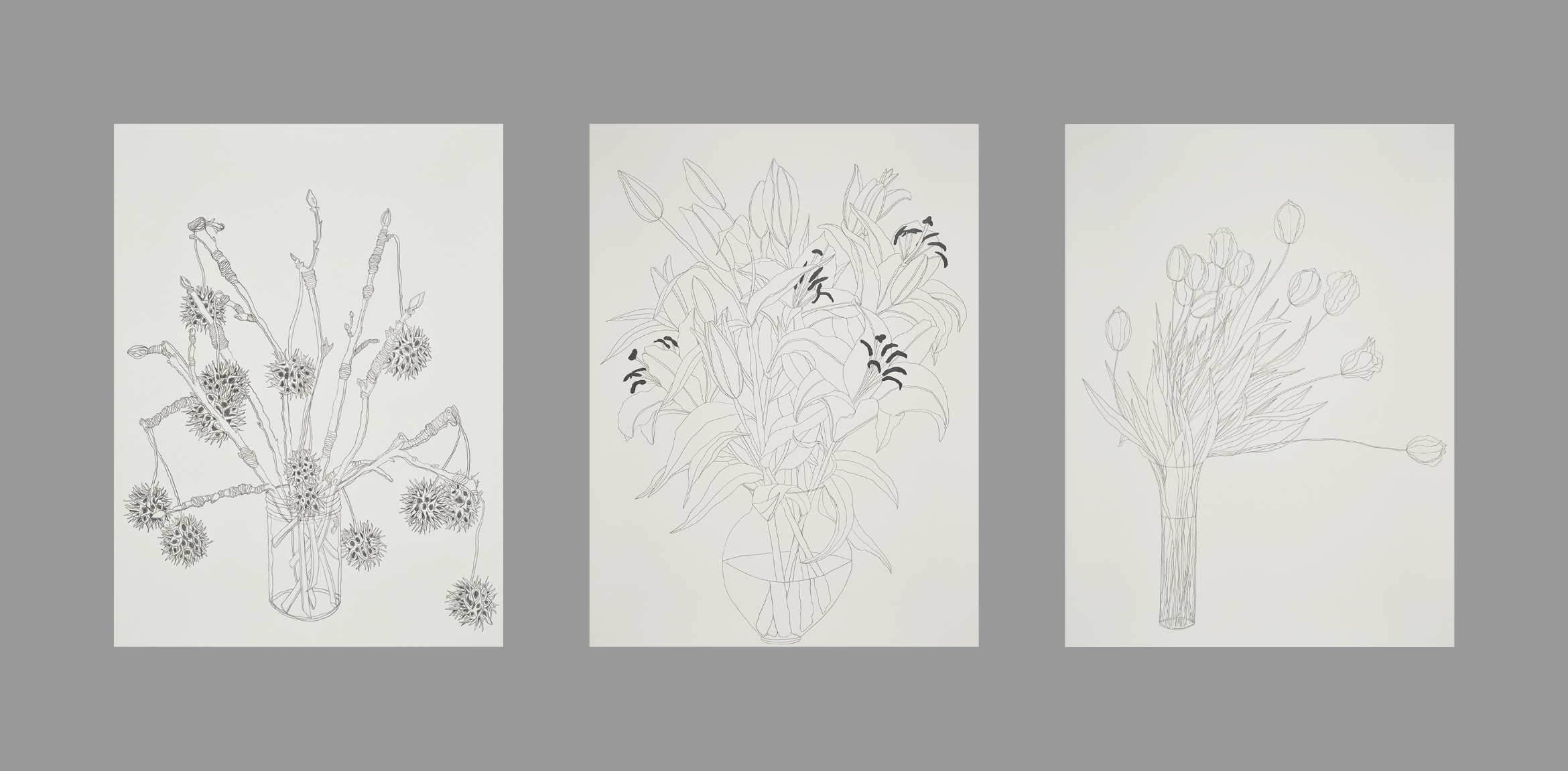
Invisible Man (after Ralph Ellison), 2015
Indigo and matte acrylic on book pages on panel
36 x 36 inches (91.4 x 91.4 cm)
Courtesy Studio K.O.S., Lehmann Maupin, New York and Hong Kong
© Tim Rollins and K.O.S
Photograph by Michael Thomas
Overview
The Pulitzer Arts Foundation is an art museum devoted to presenting the art of today and works from the past within a global context. Located in the heart of St. Louis for more than 20 years, its home is an architectural landmark designed by celebrated architect Tadao Ando. Open and free to all, the Pulitzer is a cultural and civic asset to the St. Louis community and a popular destination for visitors from around the world.
At the Pulitzer, expansive light-filled galleries host world-class art exhibitions and anchor an array of free programs, ranging from talks to concerts, literary readings, dance, performances, and wellness workshops. The Pulitzer is a place where ideas are freely explored, new art exhibited, and historic work reimagined.
In addition to the museum, the Pulitzer campus has several outdoor spaces, including Park-Like—a garden of native plants and pathways, the Spring Church—an open air stone pavilion and beloved landmark, and the Tree Grove—a shady picnic spot with oak and redbud trees.
History
The Pulitzer Arts Foundation was founded in 2001 by Emily Rauh Pulitzer, curator, philanthropist, and arts patron. With extraordinary vision, generosity, and commitment to St. Louis, Emily and Joseph Pulitzer Jr. invited Tadao Ando to design what has become a place for art, architecture, and ideas.
To complement Ando’s architecture, Emily Pulitzer invited artists Richard Serra and Ellsworth Kelly to create new artworks for the building. Kelly’s site-specific wall sculpture Blue Black was made for the museum’s Main Gallery. Serra’s Joe—named in homage to the late Joseph Pulitzer Jr.—was installed in the outdoor courtyard.
From its beginning, the Pulitzer has presented a wide range of exhibitions featuring historic and contemporary art from around the world and exploring a diverse array of themes and ideas. Recent highlights have included Barbara Chase-Riboud Monumentale: The Bronzes (2022-23); Hannah Wilke: Art for Life’s Sake (2022); Terry Adkins: Resounding (2020-21); Striking Power: Iconoclasm in Ancient Egypt (2019); Ruth Asawa: Life’s Work (2018-19); Blue Black, curated by artist Glenn Ligon (2017); Medardo Rosso: Experiments in Light and Form (2016-17). These exhibitions are complemented by a wide range of free programs, ranging from talks to concerts, literary readings, dance, performances, and wellness workshops.
In addition to the museum, the Pulitzer campus has several outdoor spaces, including Park-Like—a garden of native plants and pathways, the Spring Church—an open air stone pavilion and beloved landmark, and the Tree Grove—a shady picnic spot with oak and redbud trees.
Indigenous Peoples and Land Acknowledgement (October 2023)
The Pulitzer Arts Foundation is built on land that Indigenous peoples have inhabited and traveled through for more than 20,000 years. This territory was a site of harvesting, hunting, trading, and ceremony to many Native tribes, which in recent centuries have included the Illini Confederacy, Osage Nation, and Otoe-Missouria Tribe, among others. We recognize the significance of this place to their histories, beliefs, and livelihoods as well as their continued connection to this land, which they have stewarded for generations.
The Pulitzer also acknowledges the devastating and painful history that these and other Indigenous peoples have endured for more than 500 years by colonial settlers. Acts of genocide, other types of violence, and oppression have harmed, but never defeated, their communities. This includes federally sanctioned acts that forced most of the Indigenous peoples in Missouri to abandon their ancestral lands and resettle, under tremendous hardship, to present-day Oklahoma, Nebraska, and Kansas, where many now reside. In the aftermath of this violent history, there are currently no federally recognized tribes in the state of Missouri, although today it remains a home to a diverse community of Indigenous peoples from around the world.
It is with gratitude and humility that we recognize and honor all Indigenous peoples —past, present, and future—for their contributions and their fundamental relationship to this region. Settler-colonial privilege has made us the beneficiaries of their forced and unjust removal. We recognize its continued harm in the present and understand that no statement can undo the violence and injustice Indigenous peoples have endured. We also acknowledge their resistance, resilience, and agency amidst that history, and recognize that those legacies shape our present-day responsibilities.
We offer this acknowledgment as a commitment to building meaningful and lasting relationships with Indigenous peoples by:
- Lifting their voices through public and educational programs, curatorial and community partnerships, and the presentation of artwork.
- Teaching our staff about the importance of Indigenous peoples’ relationships to the St. Louis area through regular workshops, trainings, and orientations.
- Serving as responsible stewards of the land on which the Pulitzer is situated, recognizing its deep cultural and spiritual significance to Native nations in the past, present and future.
This acknowledgment is a “living document” and will be updated as the Pulitzer continues to learn and deepen its relations with Indigenous peoples and communities.

